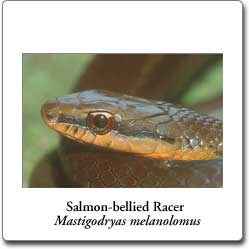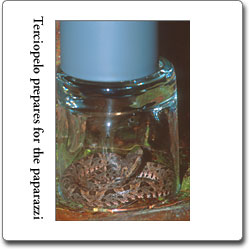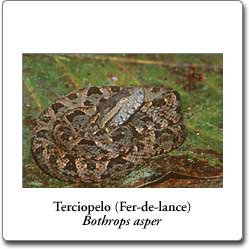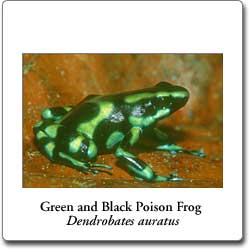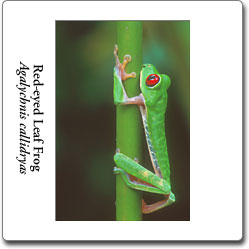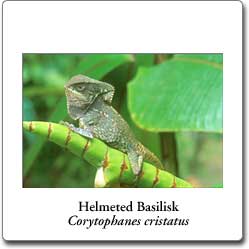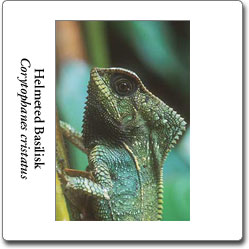|
Not-so-candid Camera
I've taken thousands of pictures of hundreds of herps over
the past several years. My modus operandi has always been to photograph the animals where found,
or in some cases handle them just enough to get them in the open where a photo is possible. However,
many (I think most, or perhaps nearly all) herp photographs are done differently: the animals are
caught when found and transported elsewhere at a later time for the photo session.
This has many
obvious advantages over photographing the animal where found. It's easier to capture a quick-moving
critter than to get a photograph of it before it scurries away. You can later find an escape-proof
place to set up the animal, and take as many pictures as you want. You can calm the animal down
by handling it or just letting
it rest so it will sit still for pictures. You can prepare an uncluttered background and set up
your camera at your leisure before placing the animal. You can take pictures of nocturnal animals
by daylight. You have plenty of opportunity to carefully identify the animal, which sometimes
involves counting scales or examining obscure body parts. And so on.
There are also at least a couple of practical disadvantages (I won't bother discussing
philosophical disadvantages here). The captured animal may not pose naturally,
either because it's frightened or because it's in an unnatural setting (for example, a highly
arboreal snake posed on a flat surface). And by removing the animal from its habitat, you've lost the
chance to capture relevant environmental information in the photograph.
I had mixed feelings about the capture-photograph-release style, which I was not used to,
but I certainly appreciated its advantages. In our case, another big advantage was having
Bill Lamar as our herp wrangler and photography instructor. Bill has been doing this for a
long time, and is an expert on all aspects of the process, from capturing herps to getting
them to sit still in a photo-worthy pose to choosing films, lenses, camera settings, and angles.
And he is completely free about sharing his expertise. I learned many useful tips about herp photography
in these sessions with Bill.
Here are some photos I took of herps that we had captured earlier. (Some of the other photos
in this story are also of pre-captured animals.)
|


